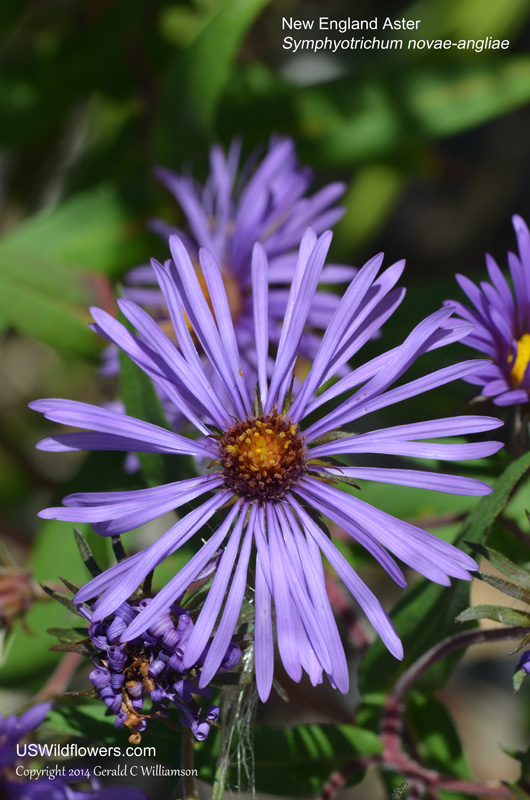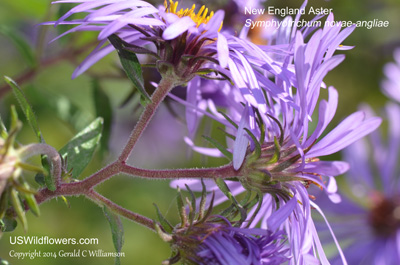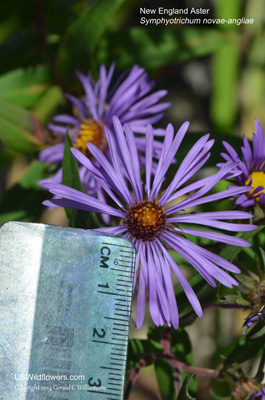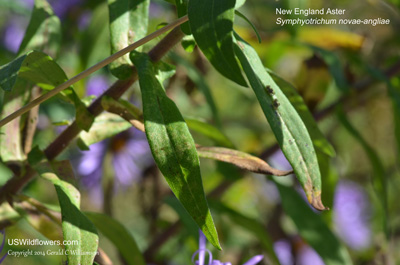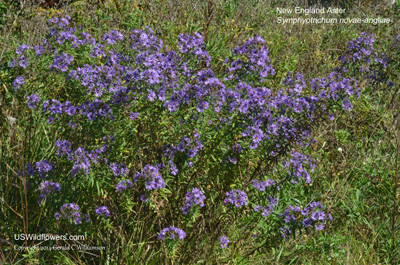Wildflowers of the United States | |||||||||||||
| |||||||||||||
Symphyotrichum novae-angliae - New England Aster, Michaelmas-daisy. Symphyotrichum is a huge genus with around 90 species, with over 75 being found in North America. It was formerly part of the huge Aster genus, which received major reclassification in the late 20th and early 21st centuries, being split primarily between Symphyotrichum(90+ species) and Eurybia (23), with a few species also being reclassified into Ampelaster (1), Doellingeria (3), Ionactis (5), Oclemena (4), and Sericocarpus (5). Symphyotrichum novae-angliae has synonyms of Aster novae-angliae, Lasallea novae-angliae, and Virgulus novae-angliae.
| New England Aster is perhaps one of the best known Asters, and with good reason. It is quite a showy plant, sometimes with hundreds of large, colorful deep purple to pink compound flowers on leafy plants growing to 4, 5, or occasionally even 6 feet tall, seen in open wooded areas, meadows, prairies, and along streams, but especially visible along many roadsides. It also has very wide distribution, being found in 42 of the 50 states, and most of Canada. (The reports of the plant in California may be historic or, as in Montana, Oregon, Utah, Washington, and Wyoming, of naturalized garden escapees.) It's especially common in the Upper Midwest and (reasonably) the New England states. It also has a fairly long blooming season, starting to bloom in early August and blooming until first frost. Found in: AL, AR, CA, CO, CT, DC, DE, GA, IA, IL, IN, KS, KY, MA, MD, ME, MI, MN, MO, MS, MT, NC, ND, NE, NH, NJ, NM, NY, OH, OK, OR, PA, RI, SC, SD, TN, UT, VA, VT, WA, WI, WV, WY Leave comments on Symphyotrichum novae-angliae at this link.  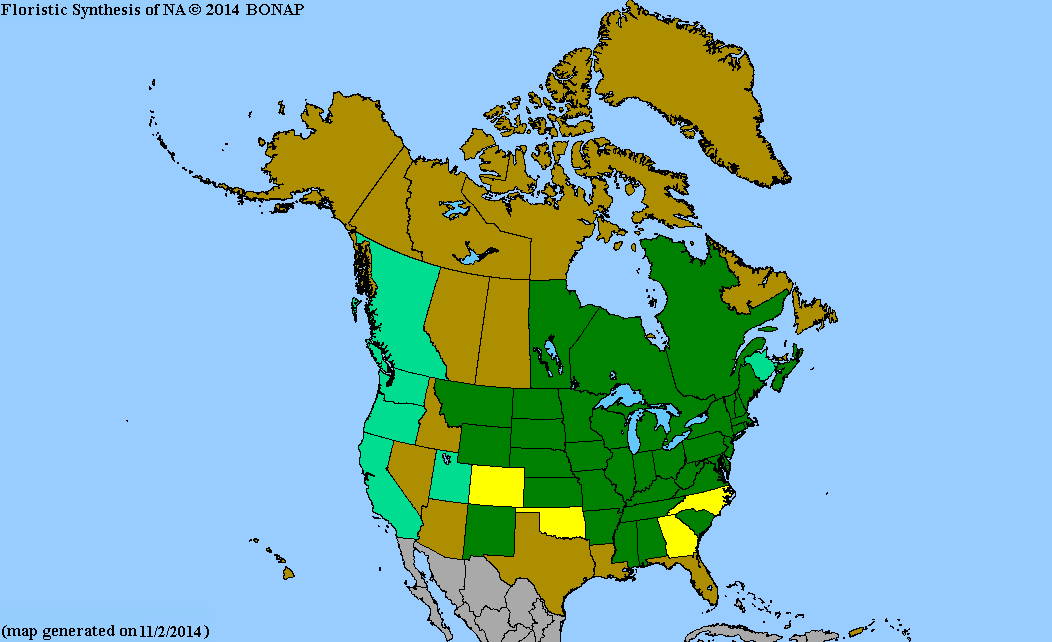 Map courtesy of The Biota of North America Program. Map color key Search Our Database: Enter any portion of the Scientific, Common Name, or both. Do a general Google search of the entire site: #ad #ad
| #ad
| | ||||||||||
|
Commercial / Cookie Notice Looking for Wildflowers for a specific state? Check here: | |||||||||||||
|
All content except USDA Plants Database map Copyright Gerald C. Williamson 2025 | |||||||||||||
Code Update 20230302

